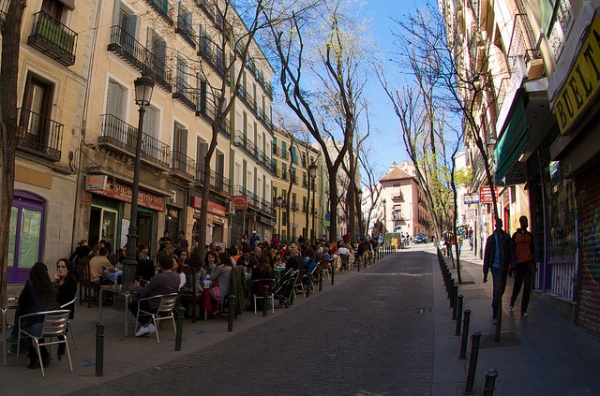Don't miss out on the best jobs!
Subscribe to HelpGoAbroad and weekly we will sent you an email with latest job posts. Provide your email address below
Spain ranks highly as one of the world’s most popular places to study abroad, and with Madrid arguably the country’s cultural capital, it makes for an amazing place to hit the books. Here you can study, while immersing yourself in one of the world’s most spoken languages, and as Madrid offers the whole attractive study experience for international students, it’s the total package.
Studying abroad varies from studying domestically in so many ways and this is totally evident in Madrid. Many of the city’s private-sector colleges offer classes in English, but most universities here will conduct theirs in Spanish, so it’s important to check how fluent you need to be before committing; and a hint, start working on your holas and gracias now.
The whole process will take several months so the sooner you pin down your selected course and start, the less hassle you’ll be going through in the long run.
If you’re after that authentic, Spanish study experience, in a city that offers all the diversity that Spain has to offer, then let Madrid be your classroom, and if you’re ready to embrace your studies in this dynamic city, read on.
Some schools worth checking out

The right facility may have a lot to do with what you’re studying. Madrid has some incredible programs that will either compliment your studies from home, or provide new options that you will start and complete here.
Universidad Autónoma de Madrid has over 1,000 exchange study students enrolled. With a solid commitment to culturally inclusive learning, and flexible summer and contemporary humanities courses, UAM offers many opportunities.
Nebrija University If classes studying side-by-side with Spanish students is your ideal, then Nebrija University is for you. It’s one of the smaller universities in Spain, yet it has two campuses with one conveniently located in the city. From studies available in journalism, performing arts, engineering, and all offered within integrated programs, Nebrija might be the university for you.
The College for International Studies offers year round, semester and summer programs including cultural activities, excursions, housing with Host Families, and all focused on immersing you within this flamboyant city.
ThE places for student housing in Madrid
Student housing is big business here so do your research. Does your facility offer housing assistance? Is public transport readily available? Do you want to get out on your own, live with a host family, share, or live within a student-housing complex?
La Latina is a vivacious neighborhood within tall buildings and little laneways. Rent for student accommodation is not the cheapest here, but it’s not out of the reach of most students’ budgets.
If on a leaner budget, then consider Lavapies. An affordable inner city neighborhood, and home to a large immigrant population, it offers authentic multicultural living with cheap restaurants and bustling markets.
Malasan is for you if looking for an alternate bohemian vibe, with crazy cool cafes. Accommodation here can be a bit patchy when it comes to value for money, so it’s worth inspecting a place before committing any money.
Other areas worth a mention are Moncloa, Gran Via, and Alonso Martinez.
The cost of education in Madrid
Other than getting a passport, lining up insurance, and buying your airline ticket, you’ll have to weigh up the cost of education in Madrid before passing through that departure gate.
Madrid is ranked fourth in Spain’s list of the most affordable cities for students, and you should expect to pay between US$400 and US$1,150 a month for living expenses.
Applicants from the EU pay the same fees as local students, which are usually between US$861 - 1,620 per year at public universities, and between US$6,964 - 22,791 per year at a private-sector university. Depending on your facility, you may also be eligible to apply for any grants available to Spanish students, which will help with your tuition fees.
If coming from a non-EU country, your fees will be slightly higher and you’ll need to confirm these costs with your chosen facility. An example of an all-inclusive semester (tuition, orientation, housing, insurance, cultural activities/excursions, plus metro and bus passes for the first month) would be from US$7,541 – $11,675 for an apartment, and from US$7,861-$12,825 in a homestay with some meals included.
Madrid is fast-paced with a cultural mix of modern and traditional neighborhoods, all contributing to its ranking as one of the 50 best student cities to live in, in the world.
You’re here now, so what’s next?
Looking for some helpful places to get you started once you hit the ground. The Youth Information Centre in the Madrid Town Hall (Jose Ortega y Gasset, 100. 28006 Barrio Salamanca) can provide information from secure student housing to public transport information.
Also, don’t forget to get the inside gouge from your fellow students and your facility. Join a study or intercambio (language exchange) group, get into relevant Facebook groups, check any virtual noticeboards, introduce yourself to Student Ambassadors, and attend meet-ups and International Welcome Parties, anything to get the information flowing. Everyone is in the same boat, so a problem shared is a problem halved, and you could probably help others in return.
Sign in to publish a comment


Be the first to comment on this post.